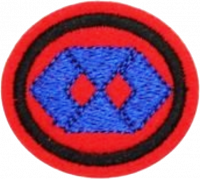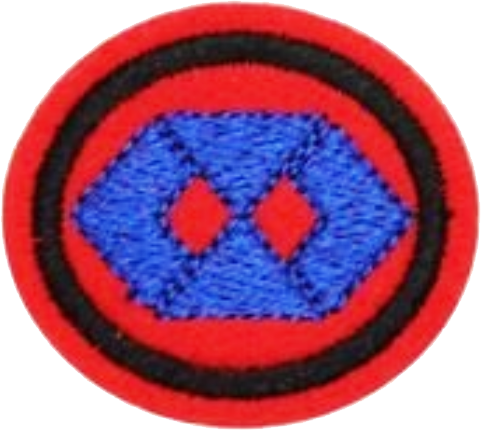Difference between revisions of "AY Honors/Administration/Answer Key/pt-br"
(Created page with "</noinclude> ==Referências== Category:Adventist Youth Honors Answer Book/pt-br <noinclude>") |
(Created page with "<noinclude>") |
||
| Line 295: | Line 295: | ||
</div> | </div> | ||
| − | + | {{clear}} | |
| − | |||
| − | |||
Revision as of 03:16, 13 May 2021
Nível de Habilidade
2
Ano
2012
Version
19.12.2025
Autoridade de Aprovação
Divisão Sul Americana
1
2
2a
2b
2c
2d
2e
3
4
7. Self Actualization (Realizing ones own potential, living up to ones capabilities)
5
The instructor should not only acknowledge the completion of this requirement, but also use the essay as a place to expand the conversation of leadership, administration, management, order and responsibility. This essay can serve as both a review and starting point for several other requirements in this honor.
6
As Pathfinders is a Ministry of the Adventist Church, the organizational structure generally parallels the Church structure.
The world church is administered by the General Conference, which comprises 15 Divisions and Fields. Most of these are divided further by Union Conferences, which are generally divided into Conferences, and finally, some conferences are divided further into Areas, where the local Pathfinder Club will reside.
The general organizational chart, from member up to the General Conference, as per the General Conference Pathfinder website, follows:
Pathfinder Club Members Counselors & Instructors Deputy Directors & other support staff Club Director Local Church Board Area Coordinators Local Conference Pathfinder Director Union Pathfinder Director Division Pathfinder Director General Conference Pathfinder Director
The Divisions and Fields can be found at [1]
The 10 Union Conferences and Missions of the North American Division can be found at [2]
The current World Pathfinder Director is Jonatan Tejel. The current North American Division Pathfinder Director is James Black. (see [3])
You will need to research within your own Division, Union, Conference and Area to determine the chain of leadership applicable to you.
7
Planning is the process of systematically preparing for the future. In a Pathfinder club, there are several components of planning. Below is one way to consider a planning process, but it is certainly not the only way.
The first is to assess and understand the organization, which will allow effective planning for that specific club. Some things to consider may include: What is the mission and purpose of the club, which should shape all of the activities. What are the components of the Pathfinder experience, from the Investiture Achievement to the Honors to various activities. What are the the age level and skills of the members, as well as the staff. Where is the club located (what space can it use, what is the general climate and terrain of the city or state that needs considered for planning activities, etc). Think of some other basic considerations to understand as well.
Once the club is assessed, what are the activities it intends to accomplish, and over what time period? Consider some of the following, but list others that may be relevant: Staff recruitment and training Coordination with the local church for use of space Pathfinder recruitment Induction Club meetings Investiture Achievement classes Honor classes Skill training Field trips Mission and outreach work Community service projects Pathfinder Bible Experience Camping Hiking Camporees Pathfinder fairs Pinewood derby Pathfinder Sabbath Drilling and marching Fundraising Investiture
Once the basic ideas of what to do are decided, lay that against the calendar. What are the area, conference, union or division events that have set dates? What are the events the local church already has scheduled? What are the dates of operation and vacation of the public or church schools that the Pathfinders are likely to come from? What are the days available for use of the Pathfinder meeting room at the local church or elsewhere? Are there some things that must be done sequentially (it is better to teach basic camping skills before camping, one needs to learn drill before competing in a drill competition) Are there certain times activities are best done (depending upon where you live and what skills are known, january may be a great time or a lousy time to camp. If you have a special Thanksgiving program planned, is is usually better in November than March) Are there some things that take several weeks or months to learn or accomplish?
If you know what you want to do, you also have to consider equipment. Effective planning will need to take into consideration supplies, tents, food, chairs, art supplies, transportation - all of the things you use as part of Pathfinders. What equipment do you have, and what condition is it in? Do you need to consider either new equipment, or time for maintenance? Where is equipment stored, and how much time do you need to get it before using it? Is there some equipment or supplies that are perishable? If so, when will you acquire and/or use them.
As you start to fit all of the pieces together (and it is not easy), you also have to consider one of the more challenging aspects - budgeting. How much does each component cost? Don’t forget things like transportation, food, fuel, uniforms, patches... How much money does your club have in reserve? How much does your church contribute? How much does each Pathfinder contribute (Dues, membership registration, etc) What do club registration fees amount to for the conference and/or area? What are other ways the club may consider raising money? Have these been fit into the calendar? Once a master plan for the year has been made (and approved by the local Church board), it is important then to remember that planning isn't done. The main plan is just the overall guideline. Each activity, each event, will need a more focused plan, and plans will always need to be flexible as circumstances change.
it may sound complex (it is), but with proper planning and preparation, Clubs are better prepared, leaders are better prepared, and the overall program runs more smoothly, providing a positive environment for spiritual, mental, physical and social growth for the pathfinders, and for their staff. Poor planning, however, leads not only to disorganization and higher stress, it may also quickly lead to an unwelcoming or even unsafe environment.
8
This is clearly something to be done in association with the Pathfinder staff. This fits well within the TLT program and responsibilities, but that doesn't exclude younger Pathfinders. A Pathfinder is never too young to be exposed to the planning process, and the early format of the Pathfinder Club devolved quite a bit of responsibility for planning down to the Unit level - to the youth themselves. But it must be remembered that the club leadership has a responsibility to provide guidance, oversight and ensure the decisions made are safe and more importantly fit within the purpose and mission of the Pathfinder program.
9
MASP (Método de Análise e Solução de Problemas), often translated as either Method for Analysis and Solutions to Problems, or Method of Analysis and Troubleshooting (MAT), is a method of assessing and resolving problems in organizations popularized primarily in Brazil. MASP is a variant of the PDCA (Plan, Do, Check, Act) or PDSA (Plan, Do, Study, Act) method of problem solving, often comprising an eight step process that begins with looking at behavior, actions or outcomes that need adjusted, and then proceeds to find and implement solutions, while also monitoring the overall effectiveness.
4. Build a Plan of Action: What are you going to do to address the root cause of the problem? Be clear about the strategies to employ to accomplish change, don’t just say the plan is to change. How can you change certain behavior, actions, underlying causes?
7. Standardization: Once you have found the new set of actions and methods that lead to the desired changed outcome, standardize these actions. Clearly identify the new pattern of behavior, process or actions, and communicate these throughout the organization. Be sure they are understood and applied.
PDSA begins first with a basic set of questions. What am I trying to change, how can I change it, how will I know when the desired effect has taken place. Think of PDSA as a loop, rather than a linear process.
2. DO: Carry out a small-scale test of the plan. See how it works. Is it beginning to bring about the changes desired?
3. STUDY: What are the effects of the changes? Are they meeting expectations? Where can they be adjusted to be more effective? Are these the right changes to be made to achieve the desired outcome?
4. ACT: Implement the adjusted changes on a larger scale. At this point, you can return to Step 1, and continue through the cycle. As noted above, PDSA serves as a rapid cycle process, so it may be run numerous times to be most effective, or can be used in rapidly changing situations.
10



